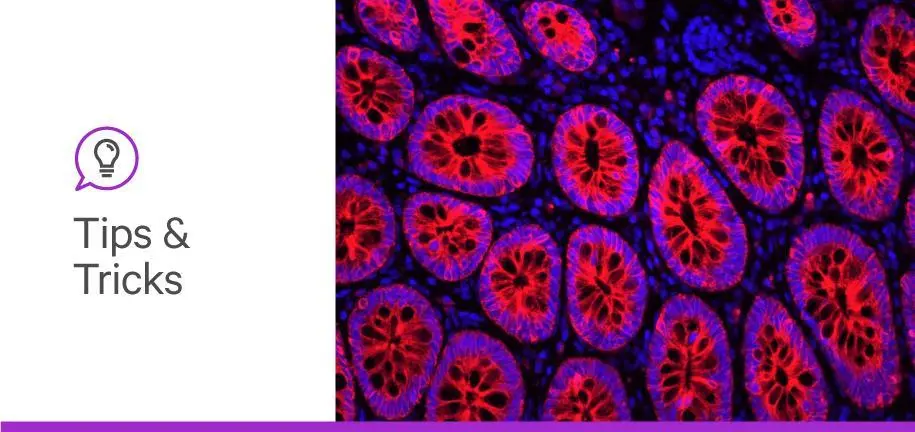
Vector Laboratories is closed for the President’s Day on Monday, February 19th. We will be back in the office on Tuesday, February 20th.
We will respond to emails upon our return. Have a wonderful day.
Menu
Vector Laboratories is closed for the President’s Day on Monday, February 19th. We will be back in the office on Tuesday, February 20th.
We will respond to emails upon our return. Have a wonderful day.

Mounting your stained specimen is typically the last step in your immunohistochemistry or immunofluorescence workflow prior to imaging (1). By the time you get to this stage of your experiment, it might be hard to think about anything but your results, but it’s worth taking the time to choose the right mounting medium (for a primer, look no further than our post Considerations for Mounting Media Selection). Here, we’ll dig into a key mounting media question: Will setting or non-setting media work best for your experiment?
Mounting media can either harden into a solid film upon drying (setting) or remain in a liquid state (non-setting). Almost all solvent-based (non-aqueous) media are setting, so if you’re interested in using a non-setting media, you’ll probably need to choose a water-based (aqueous) mounting media. Both setting and non-setting formulations can provide mounting media’s main function, which is to physically protect the specimen and keep it from drying out (1). Neither is better than the other; it’s all about the right fit for your experiment.
Setting media are generally better suited for long-term storage, and some allow you to keep your stained slides at room temperature. Non-setting mounting media can be a great choice if you don’t need to save your slides for very long, but remember that specimens mounted with non-setting media may require storage at 2–8°C.
Shrinkage occurs with some setting media and can alter the appearance of cell morphology. It may also lead to the formation of bubbles, which tend to act like tiny lenses and scatter light. Both bubbles and shrinkage can make crisp, unambiguous visualization of your specimen more challenging. Since non-setting media remain liquid, you won’t need to worry about retraction or shrinkage. If you’d still like to use a setting media, don’t worry: Vector Laboratories offers a variety of both setting and non-setting media that will keep your specimen crystal clear.
If you want to take a look at your samples right after mounting, a non-setting media might be the best choice. Since these media stay in a liquid state, they don’t need to harden prior to imaging. Setting media, on the other hand, will have to dry before you image your specimen, and some require that you wait for as long as 24 hours for the best viewing results.
If you opt for a non-setting mounting media, you may need to apply a sealant (like nail polish or plastic sealant) around the edge of your coverslip to keep it in place. You may enjoy giving your slides a little manicure before imaging, but this process can be time-consuming if you need to mount a large number of slides. What’s more, some sealants can cause quenching or background fluorescence (2). Consider using a setting media if you’d prefer to skip this step.
Are you the kind of scientist that has more ideas than you do specimens? Both setting and non-setting media might be able to help you out. It’s possible to remove the coverslip of mounted sections by soaking the slide in buffer, allowing you to re-stain your specimen and then mount again. This can also be a great trick to get rid of any unwanted bubbles that happen to pop up in your mounted samples (3).
Now that you know all about the pros and cons of setting vs. non-setting media, you might want to consider what else your mounting media can do for you. This stellar solution doesn’t just protect your specimen: It can also improve the optical clarity of your sample when you view it under the microscope or prevent your fluorescent signal from photobleaching (fading). If you’d like to make the most of all the advantages that a high-quality mounting media can offer your experiments, we have a few suggestions for you.
Now that you know how to choose a mounting media that’ll take your staining across the finish line, there’s really only one question left: What incredible discovery will you make next? If you run into any trouble along the way, check out our SpeakEasy Science Blog and Protocols and User Guides for support with every step of your staining workflow. We’re here to help!





Stay in the Loop. Join Our Online Community
Together we breakthroughTM

©Vector Laboratories, Inc. 2024 All Rights Reserved.